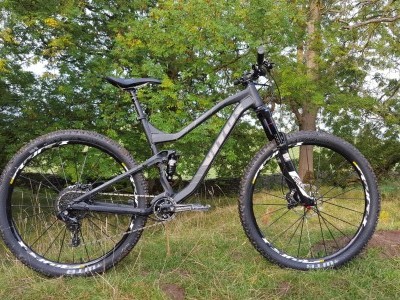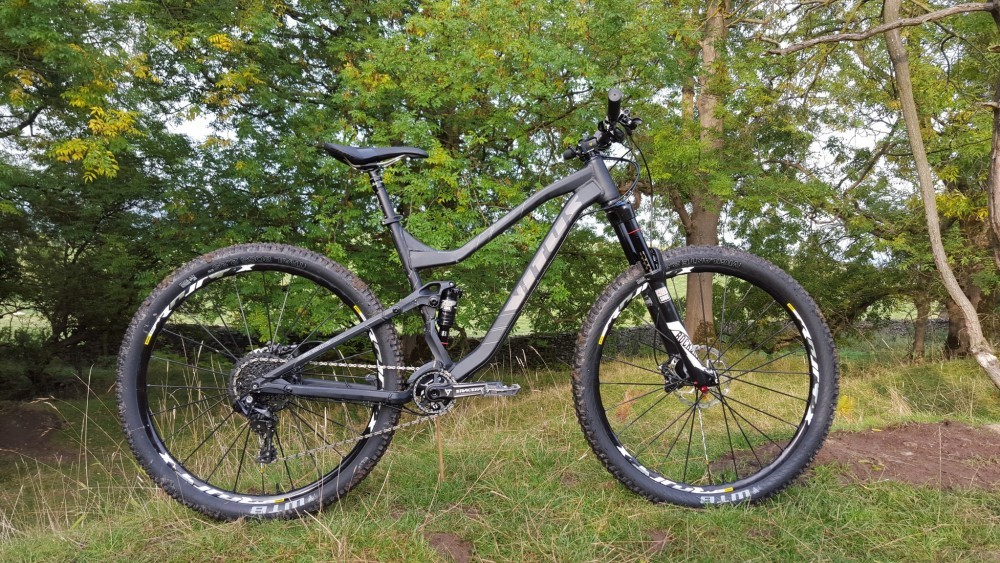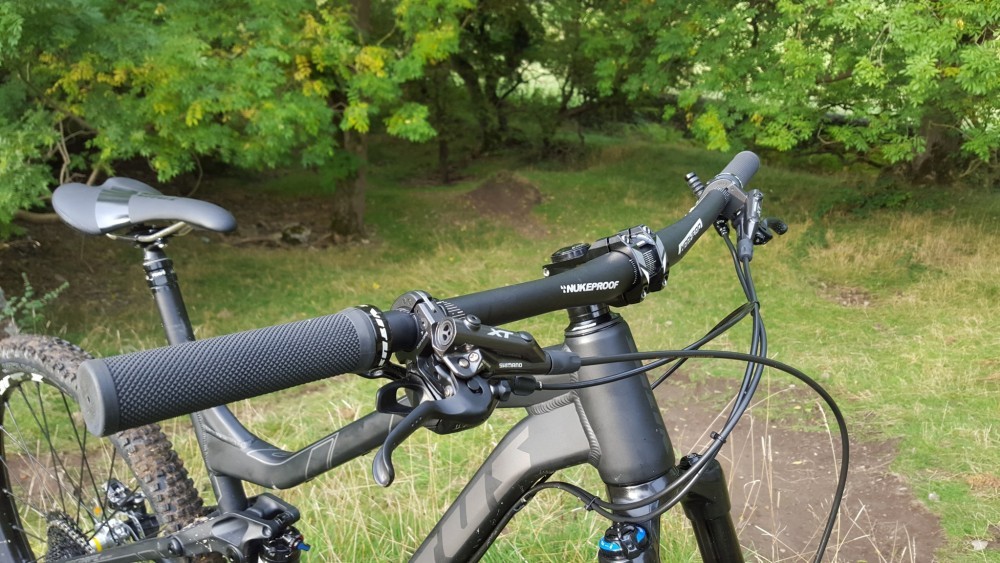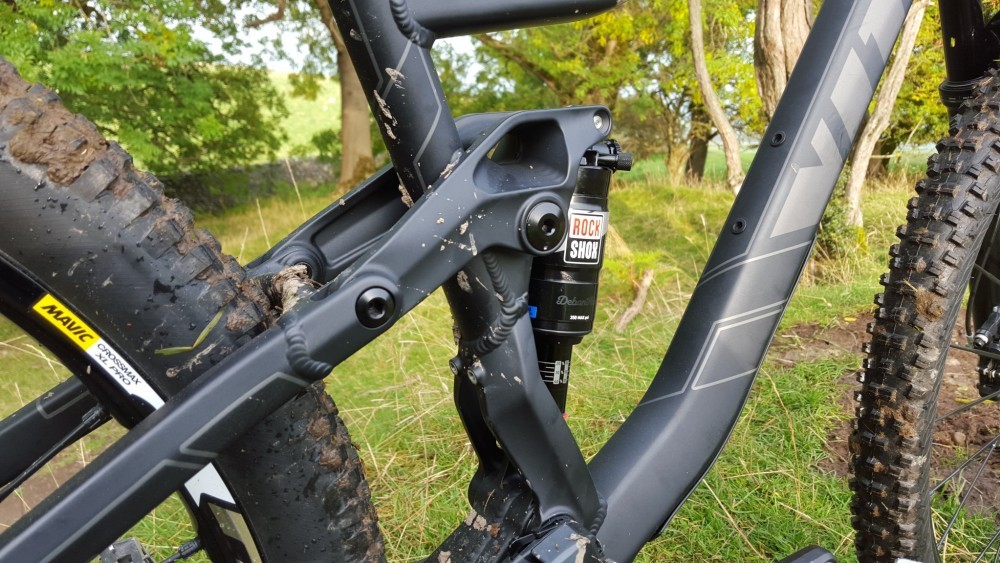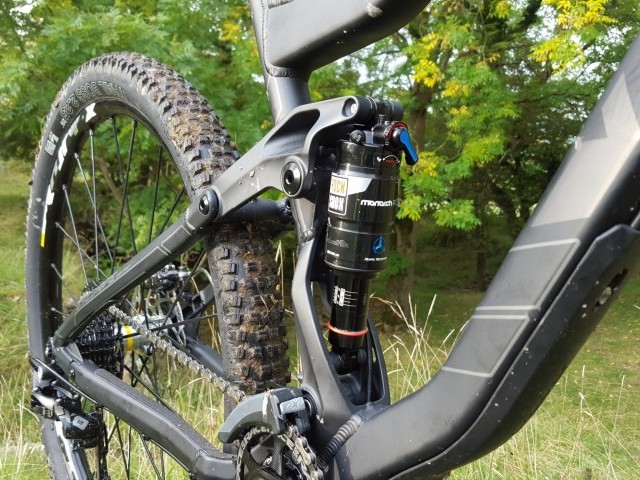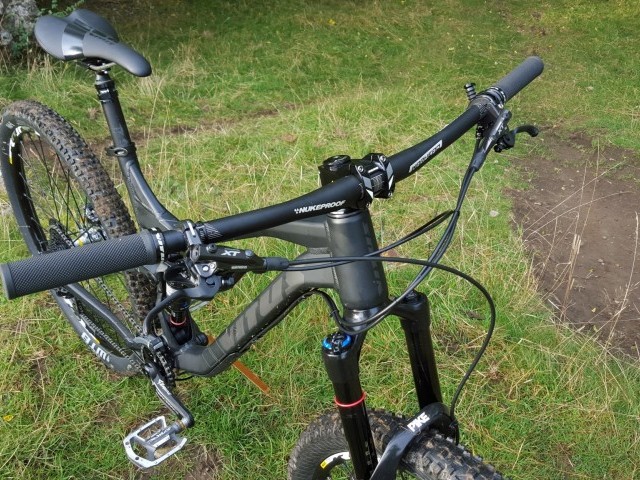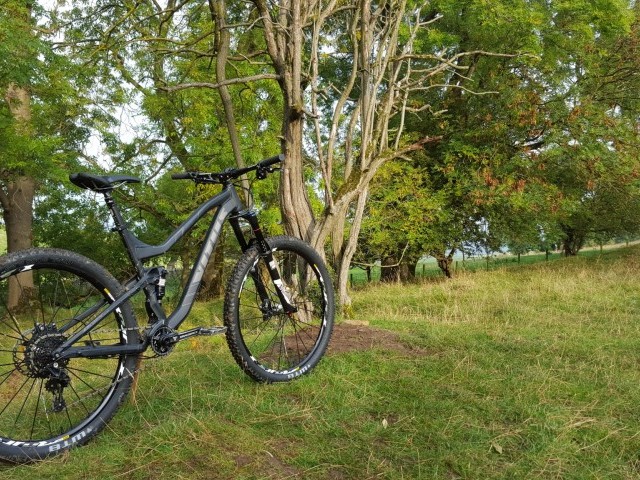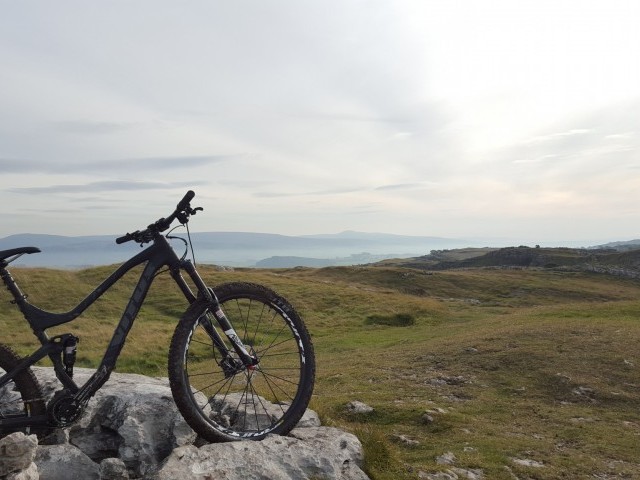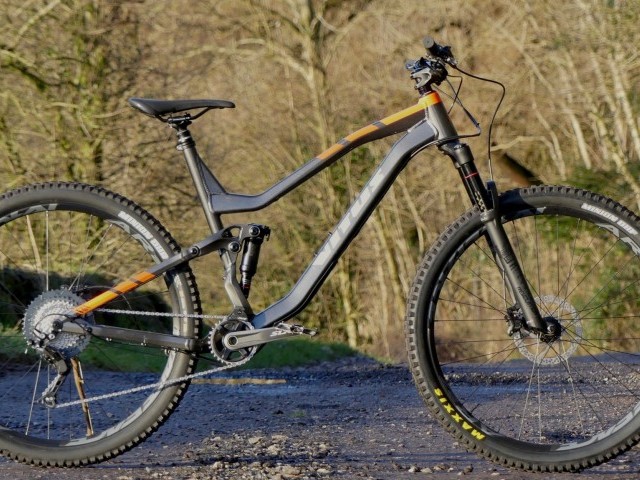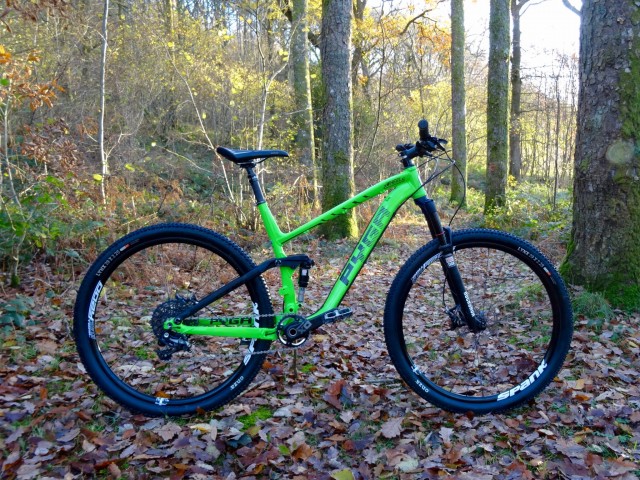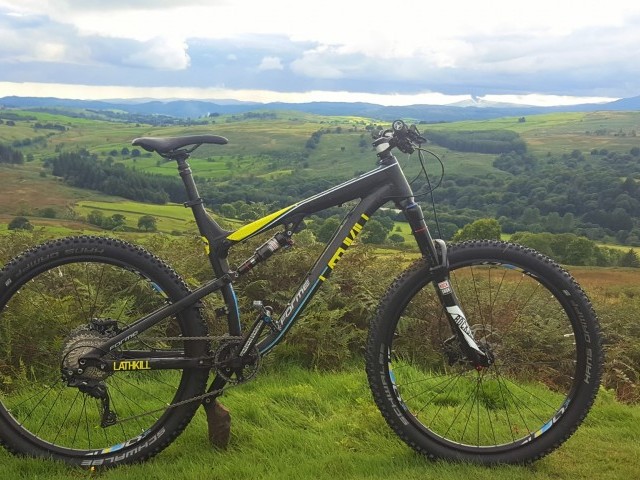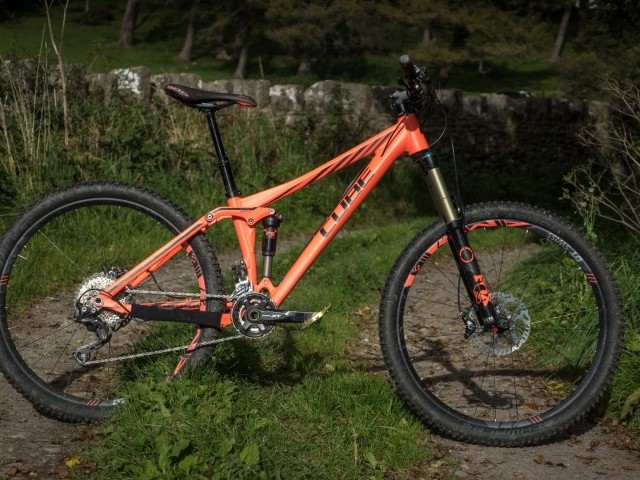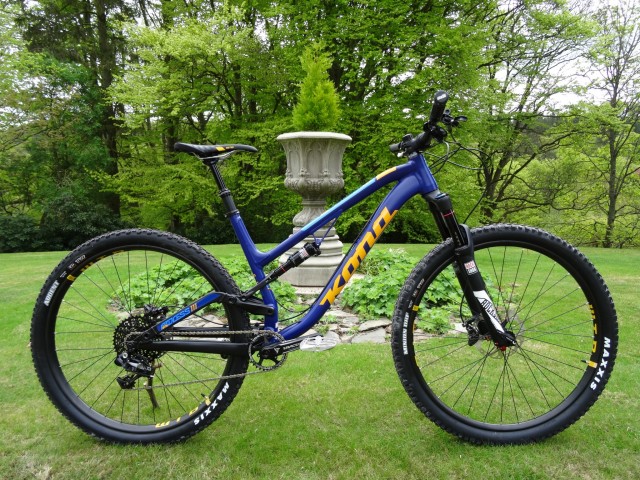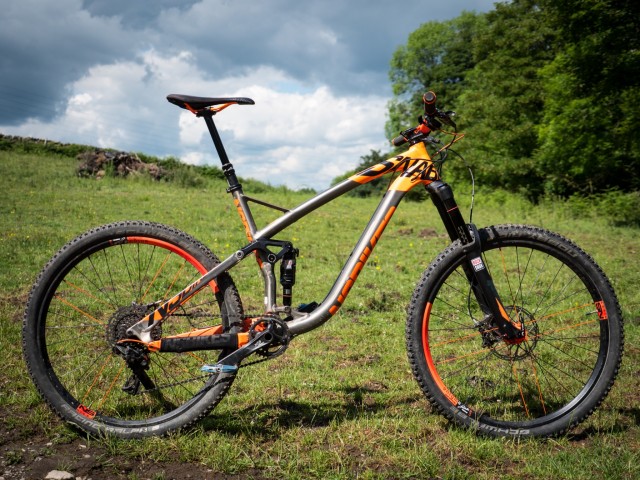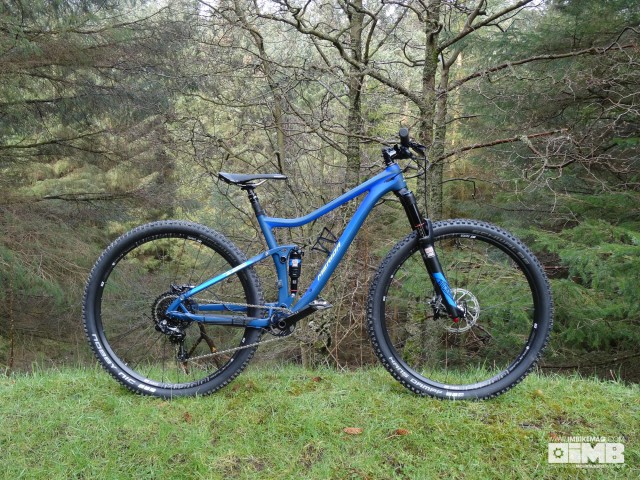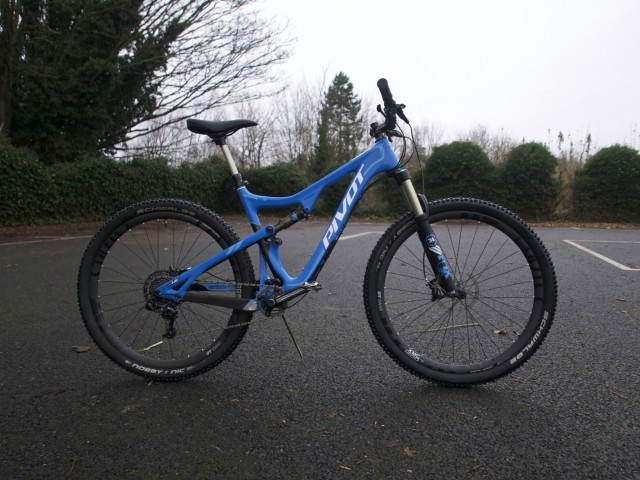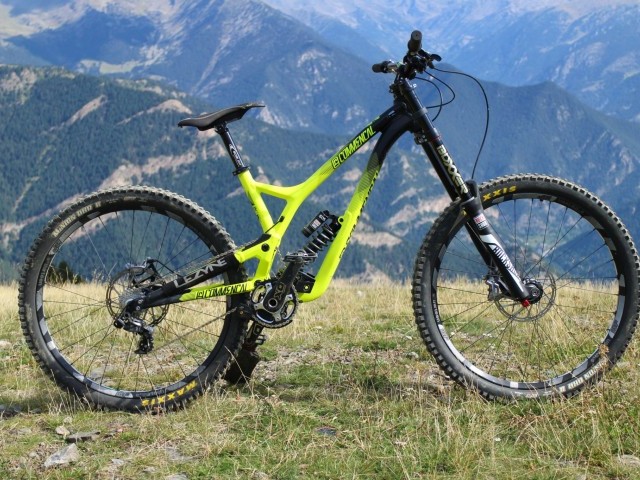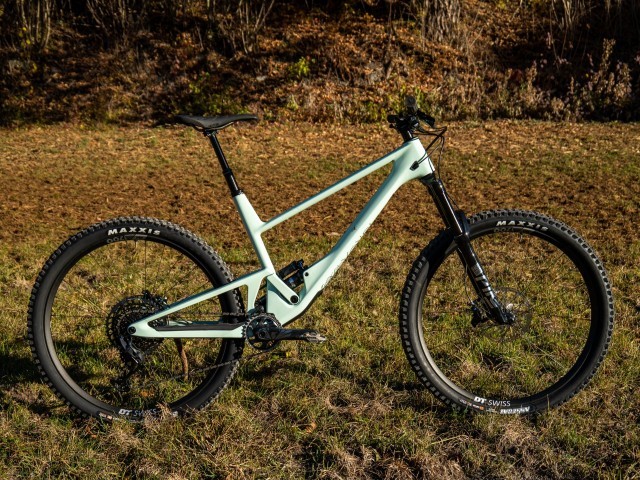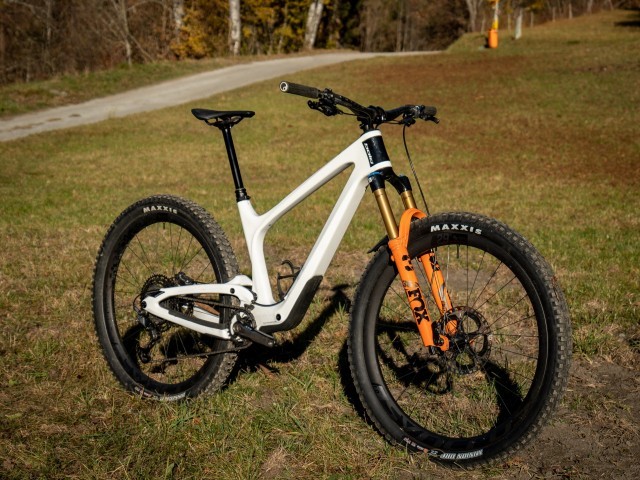At A Glance
The Vitus range has seen a bit of a revamp over the last 18 months right down to a redesigned suspension platform. Vitus say they were aiming for a perfect balance of performance and aesthetics as they tried to create their ultimate bikes based around 'simplicity, integration and modernity'. The range now includes the 155mm Sommet, and the 135mm Escarpe featured here in its 29er form.
Buy Trail Bikes on
The Escarpe sports 135mm of travel out back courtesy of a Horst Link with a floating horizontal shock mount. This is controlled by a Monarch RT3 Debonair , and due to the pivot location we see a clam shell construction in the seat tube to make space for the main pivot point. Up front we see the ubiquitous Pike with 150mm of travel, sending a clear message that this is not some XC whippet 29er, but a bike that is looking for a challenge.
SRAM look after the drivetrain coupled with Shimano brakes to give the best of both brands. Raceface and Nukeproof cover bars stem and cranks, but it's the wheels that stand out from the crowd. Mavic Crossmax XLs keep things rolling and give the bike a real high-end exclusive look with their bladed spokes and are shod with the excellent WTB Vigilante and Trail Boss tyres. With a modern, long front centre and a slack head angle the Escarpe looks ready for anything, but with 650b wheels now the norm, is there still a need for big wheels?
On The Trail
I'm right in between sizes on the Escarpe and ended up on the large. Initially swinging a leg over I was concerned that maybe the cockpit was a bit short, but after a quick car park test I found that it was the steep seat angle that made it feel compact and once stood up everything felt a much better size. Out on the trail I opted to break it in gently, conscious of the wheel size, and thinking it may be more of a mile munching machine like so many 29er are designed. It was immediately apparent that the stiffness and speed of pick-up in the Mavic hubs was excellent, and there was a real feeling of efficiency and effortless acceleration. Speed was carried exceptionally well and the bike rolled over everything easily, and sprinting was a rewarding experience with every bit of power transferred into forward motion. When things got vertical on the ups, the steep seat angle kept everything in order and the front wheel pointing where it was needed. The slightly high bottom bracket kept pedals clear of obstacles and allowed for near constant pedalling through rough climbs.
My first descents were an eye-opener. I had initial pre-conceptions that this would be a straight-line machine that would roll over everything, but might be a little lifeless. One hundred metres into the trail and I had spent more time in the air than on the ground, hopping and popping from everything I could find. Any thoughts of wheel size were forgotten, and confidence grew and grew. We know that the Pike is an incredibly competent fork, and the question ended up being; can the rear suspension match it? With only 135mm of travel in the rear, this could be a problem, and in this situation it doesn’t match the front, in the same way, a 160mm enduro bike might. Instead the back end is very stiff, and the bike doesn't sit into its travel as much as a longer travel bike would, but this does give an incredibly lively ride. The combination of an accurate and tight rear end with the 29er wheels create a great pedalling platform while still being capable on the rough descents.
Having found out how excellent this bike was in the descents, it was time to find something that would get it out of its depth. I decided that I would point it at lots and lots of rocks, expecting that the rear end might struggle to keep up with the front. I was wrong, very wrong, and found myself barrelling over everything in my path. It turns out you can have a 29er that is as willing to roll over rocks as it is to jump off them. To find the limits, I headed to some freshly cut enduro style tracks and get on some very steep terrain.
It was these extreme gradients, which finally showed up some issues. I found it difficult to get as low as I wanted rolling into very steep ground, and felt slightly vulnerable, which could well be partly due to the slightly high bottom bracket. Perhaps a 150mm dropper post would help, especially on the bigger sizes in the range, or maybe a slightly higher rise on the bars, or maybe the next size up would sort this out.
This slight niggle didn't slow things down much, and overall the bike is exceptionally well balanced. The excellent tyres offer huge amounts of grip and allow corners to be railed with confidence, just another excellent choice by Vitus for the bike. The Mavic wheels are beautiful things, but not quite on trend with a narrow width that give the tyres a very rounded profile and there was one occasion where I managed to get a bit sideways over a jump and burp a significant amount of air. Other than this the wheel and tyre combination was hard to fault.
Overall
My faith in 29ers has been fully restored. The 650b revolution may have put the brakes on the trail and enduro 29er, but this bike represents how it can be done brilliantly. Perhaps an even longer front centre, or maybe a lower bottom bracket could enhance this bike in descent, but then it might be like all the other enduro bikes. What we have here is a true all-rounder, which continually surprises and impresses on all trails, any limits this bike has are very hard to find.
Buy Trail Bikes on
This review was in Issue 38 of IMB.
For more information visit VitusRelated
By Ewen Turner
Ewen Turner is a self-confessed bike geek from Kendal in the Lake District of England. He runs a coaching and guiding business up there and has a plethora of knowledge about bikes with an analytical approach to testing. His passion for bicycles is infectious, and he’s a ripper on the trails who prefers to fit his working life around his time on the bike.

